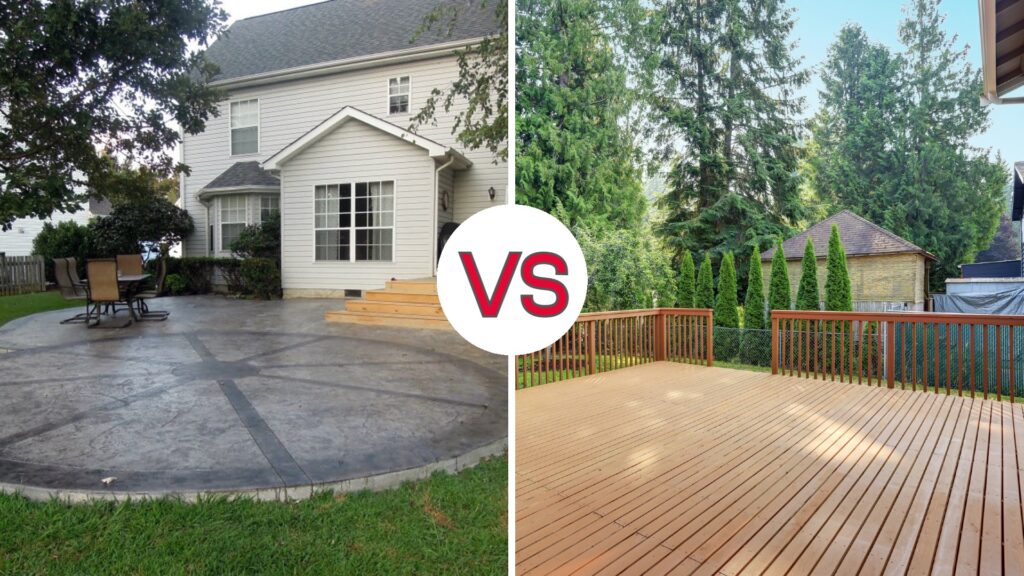Definition of Deck and Patio
Outdoor spaces are becoming increasingly popular as people are looking for ways to extend their living areas. When it comes to creating an outdoor living space, the two most popular options are decks and patios. But what exactly are they?
A deck is an elevated outdoor structure that is typically made of wood or composite materials. It is usually attached to the back of a house and can be accessed from the main floor. Decks are great for homes that are built on uneven terrain as they can be built at different levels.
A patio, on the other hand, is a ground-level outdoor space that is typically made of concrete, pavers, or natural stone. Unlike a deck, a patio can be built on almost any type of terrain without the need for extensive engineering.
One of the key differences between a deck and a patio is the materials used. Decks are typically made of wood or composite materials while patios are made of concrete, pavers, or natural stone. Wood decks require more maintenance than patios as they need to be power-washed and resealed every few years.
Another difference between a deck and a patio is the cost. Decks are generally more expensive to build than patios as they require more materials and labor. However, decks tend to have a higher return on investment (ROI) than patios as they add more value to a home.
When deciding whether to build a deck or a patio, it is important to consider the terrain, the materials, the upfront cost, and the ongoing maintenance costs. By making an informed decision, you can create an outdoor living space that fits your needs and budget.
What is Cheaper to Build?
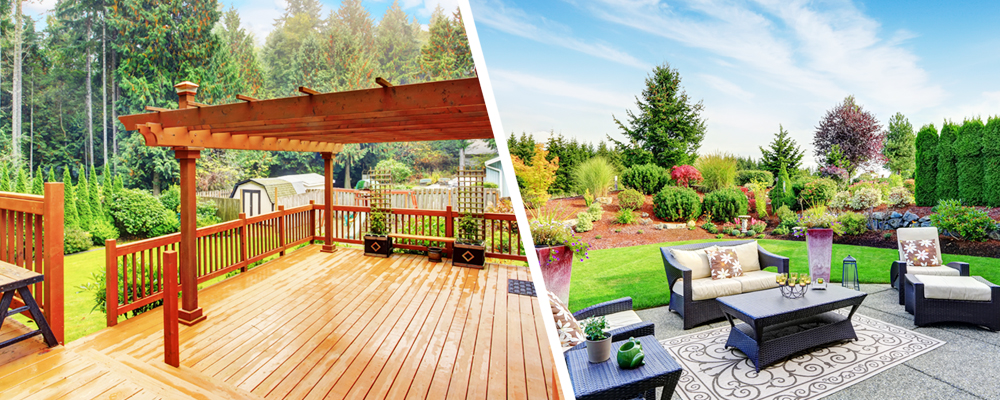
When it comes to creating an outdoor living space, the decision between building a deck or a patio can be a tough one. While both options offer their own unique benefits, one factor that can greatly influence your decision is cost. So, which is cheaper to build – a deck or a patio?
Let’s start by discussing the upfront costs. Typically, decks are more expensive to build than patios. This is because they generally require more materials and labor. Decks require a frame, substructure, and decking material. They also often require permits and inspections, which can add to the cost.
In comparison, patios are typically made of concrete, pavers, or natural stone. They don’t require as many materials or as much preparation as decks, and therefore, tend to be less expensive. Additionally, patios can be installed on almost any type of terrain, whereas decks require a level surface or the addition of supporting structures.
However, the upfront cost is not the only factor to consider. You also need to think about the ongoing maintenance costs. Decks require regular maintenance, such as power washing and staining, to prevent damage from weather and wear and tear. This can add to the overall cost of owning a deck. Patios, on the other hand, require minimal maintenance. They can be easily cleaned and repaired if damaged.
Another factor to consider is the return on investment (ROI). While decks are more expensive to build, they have been shown to have a higher ROI than patios. This is because they add more value to a home. A well-built deck can enhance the visual appeal of a home’s exterior and add valuable outdoor living space. Patios can also add value, but usually not to the same extent as a deck.
When it comes down to it, the decision between a deck or a patio ultimately depends on your personal preferences and budget. If you want a luxurious outdoor living space with a higher ROI and don’t mind the ongoing maintenance costs, a deck might be the right choice for you. If you’re looking for a more affordable option with minimal maintenance, a patio might be the better choice. Ultimately, with careful planning and informed decision making, you can create a beautiful outdoor living space that suits your needs and budget.
Factors to Consider

When it comes to creating an outdoor living space, choosing between a deck or patio can be a tough decision. Both options have their benefits and drawbacks, so it’s important to consider a few key factors before making a final decision.
1. Upfront Costs
One of the first factors to consider is the upfront cost of the project. Decks are generally more expensive to build than patios because they require more materials and labor. Decks also often require permits and inspections, which can add to the cost. Comparatively, patios are typically made of concrete, pavers, or natural stone, which are generally more affordable materials.
2. Type of Terrain
Another important factor to consider is the type of terrain in your backyard. If you have uneven ground or slopes, a deck may be a better option. Decks can be built to accommodate uneven terrain, whereas patios require a level surface or the addition of supporting structures. Alternatively, if your yard is relatively flat, a patio may be a more straightforward option.
3. Maintenance Costs
Upfront costs aside, it’s also important to consider ongoing maintenance costs. Decks require regular maintenance, such as power washing and staining, to prevent damage from weather and wear and tear. This can add to the overall cost of owning a deck. Patios, on the other hand, require minimal maintenance. They can be easily cleaned and repaired if damaged.
4. Return on Investment (ROI)
You’ll also want to consider the potential return on investment (ROI) for your chosen option. While decks are generally more expensive to build, they have been shown to have a higher ROI than patios. This is because they add more value to a home, as a well-built deck can enhance the visual appeal of a home’s exterior and add valuable outdoor living space.
5. Weight Restrictions
If you’re considering a deck, it’s important to keep in mind any weight restrictions that may be in place. For example, some municipalities have restrictions on the maximum weight a deck can support. It’s also important to consider the weight of any furniture or outdoor structures that you plan to add to the space.
Ultimately, the decision to choose between a deck or patio will depend on your specific needs and preferences. By considering these factors, you can make an informed decision that will help you create the outdoor living space of your dreams.
Deck vs. Patio
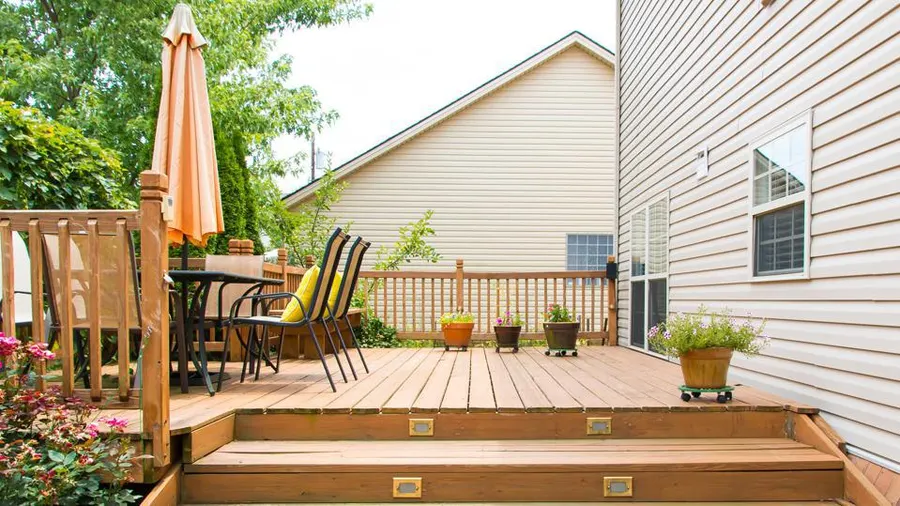
Creating an outdoor living space is a fantastic investment in your home. Not only does it enhance the quality of your life, but it can also add value to your property. One of the critical decisions you’ll need to make when designing your outdoor living space is whether to choose a deck or patio.
A deck is a raised platform made of wood or composite materials and is a popular choice among homeowners. It can be a great option if you have an elevated home or want to take advantage of the view in your yard. You can also use a deck to extend your home’s living space, serving as an extra room for lounging, entertaining, or dining.
However, decks require more effort to build and maintain than patios. They require specific permits and inspections, which can add to the project’s overall cost. Decks made of wood require regular sealing and painting to prevent damage from harsh weather conditions. Composite decks, on the other hand, require less maintenance but come at a more significant upfront cost.
Patios, on the other hand, are a ground-level structure made of pavers, concrete, or natural stone. They are versatile and can be designed to complement your home’s architectural style and landscaping. Patios are less expensive to build than decks, and their installation does not require permits or inspections. They also require less maintenance, with only regular cleaning and repairs necessary.
When deciding on whether to choose a deck or patio, consider the terrain and size of your yard. If your yard has an uneven surface, a deck is usually a better option. This is because decks can be structurally designed to accommodate sloping or uneven ground. Patios, on the other hand, require a level surface to prevent cracks and other damages. Also, patios are perfect for smaller yards or limited space.
In conclusion, choosing between a deck or patio comes down to preference and practicality. Both options provide an excellent outdoor living space, but the choice ultimately depends on your budget, the size and terrain of your yard, and the level of maintenance you’re willing to provide. Determine which option meets your needs and budget to make the informed decision that’s best for you.
Difference Between Deck and Patio Structures
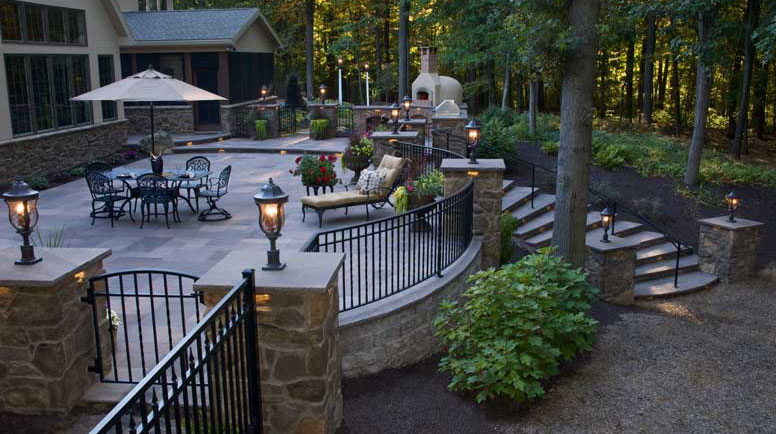
When it comes to outdoor living spaces, there are two popular options: decks and patios. Both structures serve as a great way to extend your living space and add value to your home. However, it’s essential to understand the key differences between the two before making a decision on what structure is best suited for your needs.
Decks are elevated structures made of wood or composite materials. They are usually attached to the main house and designed with railings for safety. Decks are an excellent choice if you have an elevated home or want to take advantage of a beautiful view. They offer more privacy than patios and can be designed to fit any architectural style. Decks can also be used for various purposes, such as outdoor dining, entertaining, and lounging.
Patios, on the other hand, are ground-level structures made of concrete, pavers, or natural stone. Unlike decks, patios do not require specific permits or inspections, making them a more affordable option. They are versatile and can be designed to match your home’s style and landscaping. Patios are perfect for homeowners who want to have an outdoor space for entertaining, grilling, or relaxing with family and friends.
One significant difference between decks and patios is maintenance. Decks require regular maintenance, including sealing and painting, to prevent damage from harsh weather conditions. Wood decks are especially susceptible to rotting, warping, and insect infestations, requiring homeowners to stay vigilant in upkeep. Composite decks are a popular alternative to natural wood, requiring less maintenance but at a higher upfront cost.
Patios, on the other hand, require less maintenance, with only routine cleaning and repairs necessary. However, it’s essential to keep in mind that concrete patios can crack, and natural stone requires routine maintenance to prevent staining and discoloration.
Cost is another significant factor to consider when deciding between a deck and patio. Decks generally cost more to build, requiring specific permits, inspections, and structural requirements. The cost of building a deck can vary depending on the materials used and size, whereas patios are more straightforward and typically have a lower cost upfront.
Ultimately, when choosing between a deck and a patio, it’s essential to consider your needs and preferences. Decks offer more privacy and can be used for various purposes, whereas patios are versatile, low-maintenance, and more affordable upfront. It’s also important to consider the terrain and size of your yard, as decks may be better suited for sloping or uneven ground while patios require a level surface. By understanding the key differences between decks and patios and considering your needs, you can make an informed decision on what structure is best suited for your outdoor living space.
Cost of Building a Deck Versus a Patio
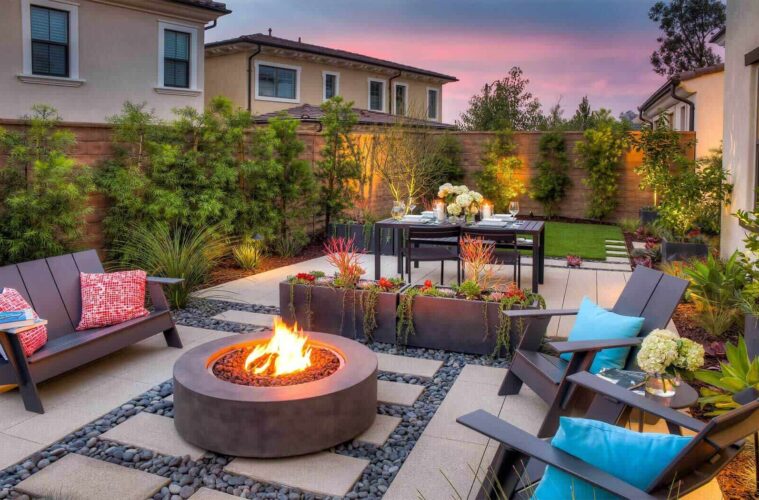
When it comes to creating an outdoor living space, many homeowners are faced with the decision between building a deck or a patio. One crucial factor that comes into play when making this decision is the cost.
On average, decks cost more to build than patios. This is because decks require more materials, specialized tools, and labor. Additionally, when building a deck, there are specific regulations and permits that need to be obtained, which adds to the overall cost.
The cost of a deck can vary depending on its size, the materials used, and whether or not any additional features are included, such as built-in seating or a fire pit. A wood deck typically costs less upfront than a composite deck, but it requires more maintenance, which can add up over time.
Patios, on the other hand, are generally more affordable to build. They can be constructed using a variety of materials, such as concrete, pavers, or natural stone, each with its own price point. Unlike decks, patios typically don’t require any permits or inspections, which reduces their overall cost.
The final cost of a patio will depend on its size, materials, and any additional features. For example, a patio made of high-end natural stone will cost more than one made of concrete pavers. Adding features like a built-in grill or outdoor kitchen will also add to the overall cost.
Ultimately, the decision to build a deck or patio will come down to personal preference and budget. While decks generally cost more to build, they offer more design options and can add resale value to a home. Patios, on the other hand, are a more budget-friendly option and can still provide a beautiful outdoor space for entertaining and relaxation.
It’s important to consider the long-term costs as well. While a wood deck may be more affordable upfront, its ongoing maintenance costs can add up over time. Conversely, a patio made of natural stone may require more routine maintenance than a concrete patio.
In the end, it’s crucial to weigh the upfront cost, ongoing maintenance, and potential return on investment when deciding between a deck and patio. By considering all of these factors, homeowners can make an informed decision that best fits their needs and budget.
Return on Investment for Decks and Patios
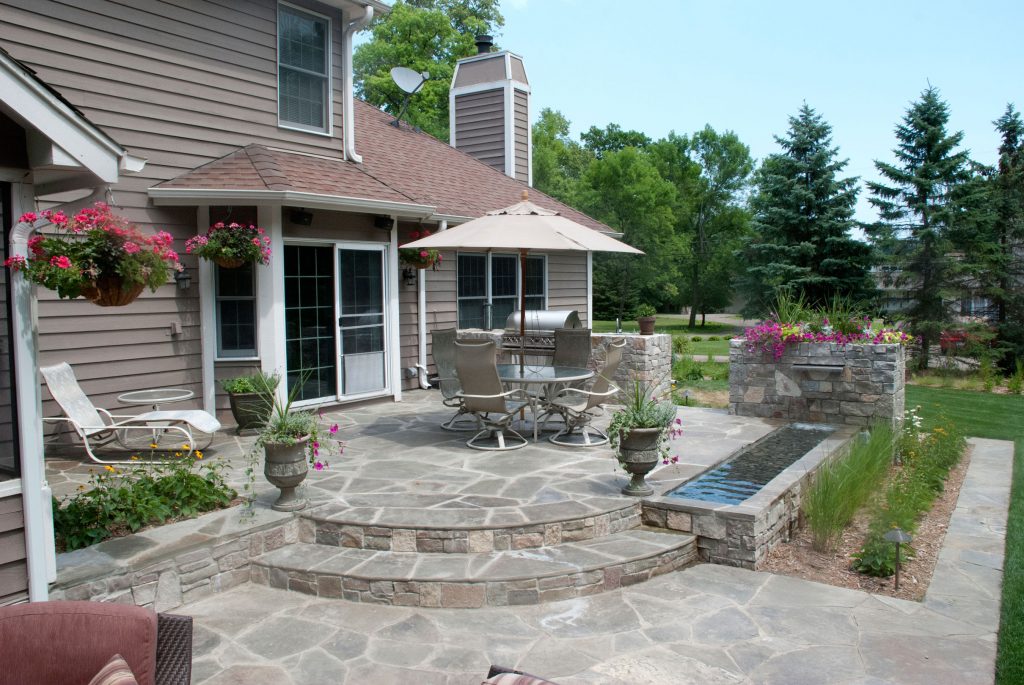
When deciding whether to build a deck or patio, one important factor to consider is the return on investment (ROI) that each option offers. ROI is a measure of how much value a home improvement project adds to a property compared to its cost.
According to studies, building a deck or patio can add significant value to a home. On average, homeowners can expect to recoup around 80% of the cost of a new deck or patio when they sell their home. This means that if a homeowner spends $10,000 on a new deck, they can expect to recoup about $8,000 of that investment when they sell their home.
Decks are particularly popular among homebuyers, with many considering outdoor living spaces a must-have feature. In fact, studies have found that homes with decks sell for more than those without them. This is because a well-built deck can add significant living space to a home, providing an extra area for relaxation and entertaining. Additionally, decks offer design options that patios cannot match, such as built-in seating and elevated platforms.
Patios, on the other hand, offer a more affordable option for homeowners who want to add outdoor living space to their home. While they may not offer as many design options as decks, they are still a popular choice for those looking to create a beautiful outdoor area. Patios made of natural stone or concrete pavers can be particularly appealing to homebuyers, as they offer a stylish and durable outdoor space.
When it comes to ROI, the key is to choose a deck or patio that matches the style and needs of your home. For example, if your home is situated on uneven ground or has a unique layout, a deck may be the better option. However, if your home has a flat backyard and you’re on a budget, a patio may be the more practical choice.
Ultimately, whether you choose a deck or patio, both options offer significant ROI and can add value to your home. By choosing a quality builder and selecting materials that are durable and attractive, you can create an outdoor living space that will be enjoyed for years to come.
Maintenance Costs for Decks and Patios
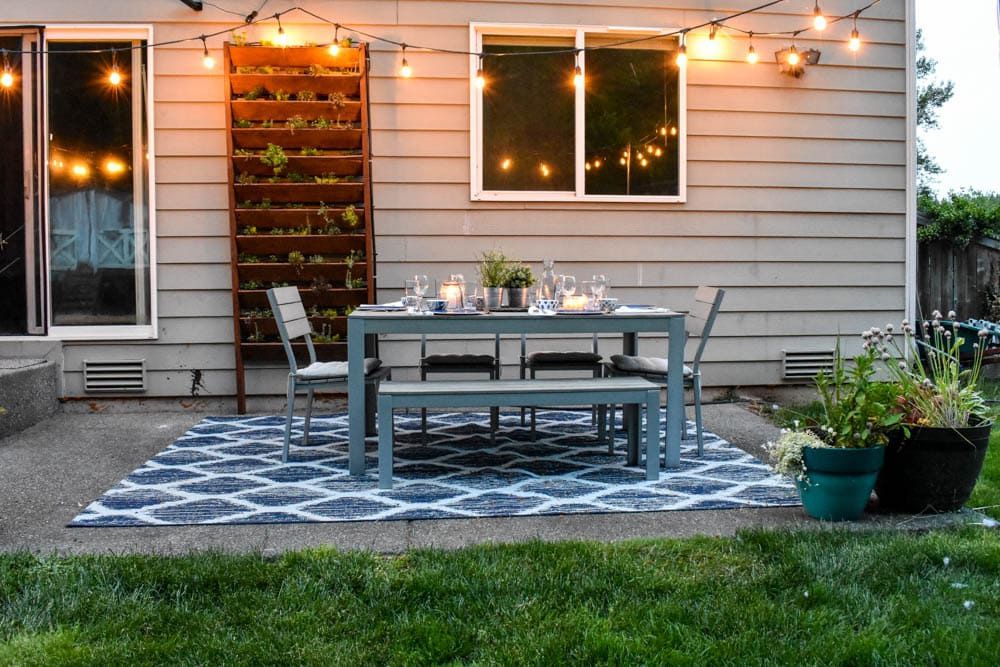
Maintaining your deck or patio is essential to ensure it continues to look beautiful and last for years to come. While both decks and patios require some maintenance, the costs can differ significantly depending on the materials used and the level of upkeep required.
One of the key differences between a deck and a patio is the material used. Wooden decks require regular maintenance such as staining and sealing to protect the wood from moisture, sun damage, and pests. The cost of this maintenance can vary depending on the size of the deck and the type of stain or sealant used. On average, homeowners can expect to spend around $700-$1,000 annually on deck maintenance.
Composite decking materials, while more expensive upfront, require less maintenance than natural wood decks. However, they still require regular cleaning with soap and water to prevent buildup of dirt and debris. The cost of cleaning a composite deck is minimal, often only a few dollars for soap and water.
Patios made of natural stone or concrete pavers require less maintenance than decks, as they do not need to be stained or sealed. However, they do need to be regularly cleaned to prevent buildup of dirt and debris. Power washing is an effective way to clean a patio, and homeowners can expect to spend around $200-$300 annually on patio maintenance.
In addition to routine maintenance, unexpected repairs can also add to the cost of maintaining a deck or patio. For example, if a deck board becomes damaged, it will need to be replaced to ensure the safety of those using the deck. The cost of replacing a deck board can vary depending on the type of wood used, with natural wood decks costing more to replace than composite decks.
Ultimately, the cost of maintaining a deck or patio will depend on multiple factors, including the materials used, the level of upkeep required, and the size of the outdoor space. Homeowners should consider these factors when deciding between a deck or patio and budget for routine maintenance costs to ensure they can enjoy their outdoor living space for years to come.
Key Differences Between Decks and Patios
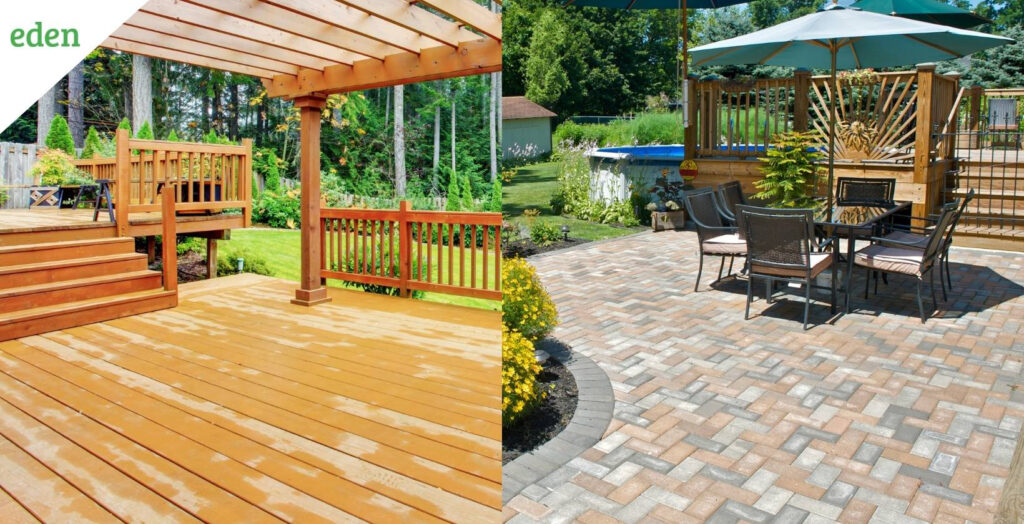
If you’re considering adding an outdoor space to your home, you may be wondering whether a deck or patio is the better choice. Both offer opportunities for outdoor living and entertaining, but there are some key differences that may influence your decision.
Materials Used
One of the biggest differences between decks and patios is the material used to construct them. Decks are typically made of wood or composite materials, while patios are typically made of concrete, natural stone, or pavers.
Maintenance Costs
Before making a decision, it’s important to consider the cost of maintaining your outdoor space. Wooden decks, for example, require regular maintenance such as staining and sealing to protect the wood from moisture, sun damage, and pests. Composite decking materials, while more expensive upfront, require less maintenance than natural wood decks.
Patios made of natural stone or concrete pavers require less maintenance than decks, as they do not need to be stained or sealed. However, they do need to be regularly cleaned to prevent buildup of dirt and debris. Power washing is an effective way to clean a patio.
Costs
The cost of building a deck or patio can vary widely depending on several factors, such as size, materials used, and labor costs. On average, a wooden deck can cost between $15 and $35 per square foot, while a concrete patio may cost between $10 and $20 per square foot.
Another factor to consider is the return on investment (ROI) of each choice. While both can add value to your home, decks tend to have a higher ROI due to their popularity and potential for customizations.
Weight Restrictions and Terrain
Decks may not be the best option for uneven terrain or areas with weight restrictions. If your outdoor space is on a slope, for example, a patio may be a better choice. Additionally, if you plan on placing a hot tub or other heavy item on your outdoor space, a patio may be a safer option.
Building Permits
In some areas, building a deck or patio may require a building permit. It’s important to check with your local government to determine whether a permit is necessary and what the requirements are.
In conclusion, the decision to build a deck or patio ultimately depends on your personal preferences and budget. Consider factors such as materials used, maintenance costs, terrain, and building permits when deciding which option is best for you.
Materials Used in Building a Deck or Patio
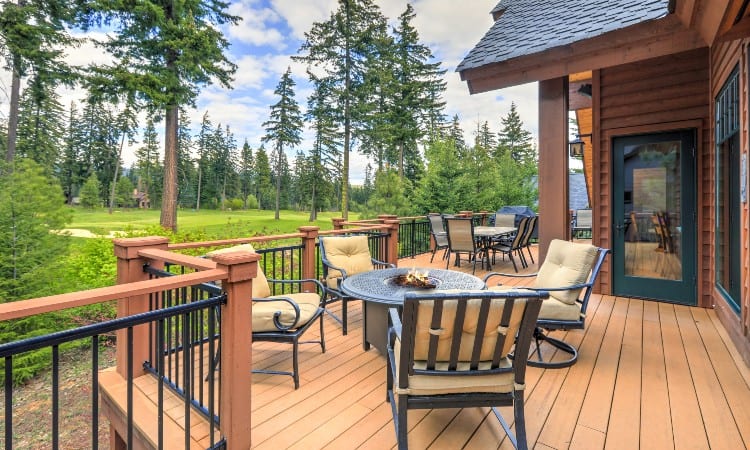
When it comes to creating your ideal outdoor space, one of the first decisions you’ll need to make is what materials to use. Both decks and patios are popular options, but the materials used to construct them can vary widely.
Decks are typically made from wood or composite materials. Wood decking has a classic look and natural feel, but it does require ongoing maintenance to keep it looking its best. Regular staining and sealing is necessary to protect the wood from sun, moisture, and pests. Wooden decks are also susceptible to rot and may need to be replaced sooner than other materials.
Composite decking materials, on the other hand, are designed to look like wood but require less maintenance over time. They’re made from a blend of plastic and wood fibers and are resistant to rot, insects, and moisture. However, they can also be more expensive than wood upfront, so it’s important to weigh the long-term maintenance costs against the initial investment.
Patios, meanwhile, are typically made from concrete, natural stone, or pavers. Concrete is a popular choice due to its affordability and versatility. It can be stamped or stained to mimic other materials, and can be poured in a variety of shapes and sizes. Natural stone, such as limestone or slate, has a unique beauty and can add an elegant touch to your outdoor space. However, it’s also one of the more expensive options.
Pavers, made from materials such as brick or concrete, are a more affordable alternative to natural stone. They can be arranged in a variety of patterns to create a unique look and are durable enough to withstand the elements. However, like any patio material, they do need to be regularly cleaned to prevent buildup of dirt and debris.
Ultimately, the materials you choose for your deck or patio will depend on your budget, style preferences, and long-term maintenance needs. Consider the pros and cons of each material and create a space that will enhance your outdoor living experience.
Types of Wood Used in Building Decks

When it comes to building a deck, one of the most important choices you’ll make is the type of wood to use. The wood you choose will have a big impact on the look and longevity of your deck. Here are some of the most popular types of wood used for building decks:
1. Pressure-treated Pine: This is the most common and widely-used wood for decking. It’s affordable and easy to work with, making it a popular choice for DIY projects. Pressure-treated pine resists rot and insects, but it does require regular maintenance, such as sealing and staining.
2. Cedar: Cedar is a popular choice for its natural beauty and resistance to rot and insects. It’s also lightweight, which makes it easier to work with. However, cedar is more expensive than pressure-treated pine and does require regular maintenance.
3. Redwood: Redwood is known for its rich, deep color and unique grain patterns. It’s also naturally resistant to rot and insects, making it a popular choice for decks. However, like cedar, redwood is expensive and requires regular maintenance.
4. Ipe: Ipe is a type of Brazilian hardwood that is known for its extreme durability and resistance to insects and moisture. It has a beautiful natural color that can be maintained with regular oiling. However, ipe is one of the most expensive options for decking.
5. Composite: Composite decking is made from a blend of plastic and wood fibers. It’s resistant to moisture, insects, and rot, and requires very little maintenance. It’s more expensive than pressure-treated pine, but can be a good investment in the long-term due to its durability and low maintenance.
When choosing the type of wood for your deck, it’s important to consider your budget, the look you’re going for, and the amount of maintenance you’re willing to do. No matter what type of wood you choose, proper installation and maintenance are key to ensuring a long-lasting and beautiful deck.
Composite Materials Used in Building Decks

Composite materials have become increasingly popular in recent years as a cost-effective and low-maintenance option for building decks. Made from a combination of plastic and wood fibers, composite materials offer a range of benefits that traditional wood decking does not.
One of the main advantages of composite decking is its resistance to moisture, insects, and rot. Unlike natural wood, which can warp, crack, and rot over time, composite decking maintains its shape and durability even in harsh weather conditions. This means that homeowners can enjoy their deck without worrying about regular maintenance and repairs.
Another benefit of composite decking is its aesthetic appeal. With a wide range of colors and finishes to choose from, homeowners can customize their deck to fit their personal style and design preferences. Composite materials can mimic the look of natural wood, but without the upkeep that comes with it.
In addition, composite decking is also an eco-friendly option for homeowners who are concerned about their environmental impact. The raw materials used to make composite decking typically come from recycled sources, such as plastic bags and sawdust. By choosing composite materials, homeowners can help reduce waste and support sustainable practices.
While composite decking may have a higher upfront cost compared to traditional wood decking, the long-term ROI can often be worth it. With little to no required maintenance and a lifespan that can be up to twice as long as that of natural wood, composite decking can ultimately save homeowners money in the long run.
When choosing composite materials for a deck, it’s important to consider factors such as weight restrictions, building permits, and uneven terrain. Working with a professional contractor can help ensure that the deck is built to code and meets safety standards.
In conclusion, composite materials are a popular and practical choice for homeowners looking to build a deck that is both low-maintenance and high-quality. By investing in composite decking, homeowners can enjoy a beautiful and durable outdoor space that will last for years to come.
Concrete Slabs Used in Building Patios
When it comes to building an outdoor living space, patios can be a popular choice for homeowners. Patios can provide a versatile and functional space for dining, entertaining, and relaxing. One important factor to consider when building a patio is the foundation, or the base on which the patio will be built. Many homeowners opt for concrete slabs as a cost-effective and durable option.
Concrete slabs are thick, flat pieces of concrete that are typically used as a foundation for outdoor structures such as patios, walkways, and driveways. They are made by mixing cement, sand, and gravel, then pouring the mixture into a form and allowing it to dry and cure. Once the slab is set, it provides a solid and stable base for a variety of outdoor projects.
One advantage of using concrete slabs for a patio base is their durability. Unlike other materials such as wood or pavers, concrete slabs are resistant to harsh weather conditions, heavy foot traffic, and general wear and tear. They are also low maintenance and require little upkeep over time.
In addition to their durability, concrete slabs are also a versatile option for patio design. They can be poured in a variety of shapes and sizes to fit any outdoor space. Homeowners can choose to leave the concrete exposed for a more modern and industrial look, or they can add a decorative finish such as staining or stamping for a more unique and personalized design.
Another advantage of using concrete slabs is their affordability. Compared to other materials such as stone or brick, concrete is a relatively low-cost option for a patio base. This can be especially beneficial for homeowners on a budget, or those looking to create an outdoor living space without breaking the bank.
When considering a concrete slab for a patio base, it is important to note that proper installation is key. The ground must be prepared and leveled before the slab is poured to ensure a solid and stable foundation. It is also important to consider factors such as drainage, weight restrictions, and building permits when planning the patio project.
Overall, concrete slabs can be a practical and cost-effective option for homeowners looking to build a patio. They are durable, versatile, and affordable, making them a popular choice for outdoor living spaces. Working with a professional contractor can help ensure that the patio is built to code and meets safety standards.
Planning to Build a Deck or Patio: What You Need to Know
If you are thinking about adding an outdoor living space to your home, one of the biggest decisions you will need to make is whether to build a deck or patio. Both options offer their own unique advantages and disadvantages, and it is important to carefully consider factors such as budget, space limitations, and maintenance requirements before making a final decision.
One of the key differences between a deck and patio is the material used for construction. Decks are typically made from wood or composite materials, while patios are often made from concrete, stone, or brick. Wood decks offer a classic and natural look, but may require regular maintenance such as power washing and staining to keep them looking their best. Composite decks, on the other hand, require less upkeep but may have weight restrictions and a higher upfront cost.
Patios, on the other hand, are often more affordable and can be made in a variety of shapes and sizes to fit any outdoor space. Concrete is the most common material for a patio base, but natural stone or pavers can also provide a unique and elegant look. However, patios may be less versatile than decks when it comes to adding elevated or multi-level areas.
Another key consideration when planning to build a deck or patio is the return on investment. Outdoor living spaces can add significant value to a home, with some studies showing an average ROI of up to 80%. However, the upfront cost of a deck or patio project can vary greatly based on materials, labor costs, and the size of the project.
In addition to budget and materials, it is important to also consider other practical factors such as the terrain of your property, local building codes and permits, and any potential weight restrictions or accessibility issues. Building a patio on uneven ground or in an area with poor drainage, for example, can lead to long-term maintenance issues and potential damage to your home.
Ultimately, whether you choose to build a deck or patio will depend on your personal preferences and needs. It is important to do your research, consult with professionals, and make an informed decision based on your budget, space constraints, and desired style and functionality. With the right planning and preparation, you can create an outdoor living space that adds value and enjoyment to your home for years to come.
Obtaining a Building Permit
Obtaining a building permit is a crucial step when embarking on any construction project, whether you are building a deck, patio, or another outdoor structure. A building permit is an official document issued by local government agencies that allows you to legally start a construction project.
The process of obtaining a building permit can be tedious and time-consuming, but it is necessary to ensure your project meets safety and regulation standards. The first step is to determine whether your project requires a building permit. Your city or county zoning department should have information on which types of projects require a permit.
Once you have determined that a permit is necessary, the next step is to gather all the required documents. You will typically need to provide detailed plans and drawings of your proposed project, as well as information about the materials and dimensions of the structure. This process may require the assistance of an architect or contractor.
After you have gathered all necessary documents and completed the application, you will need to submit them to your local building department. The turnaround time for a permit approval can vary based on the complexity of the project and the volume of applications being reviewed. Many localities offer expedited review for an additional fee.
It is important to note that starting construction without a building permit can result in fines and legal consequences. Contractors who involve themselves in unpermitted work can also face disciplinary action from their respective licensing boards.
In addition to compliance with legal regulations, obtaining a building permit can also provide protection to the homeowner in the event of a claim or dispute. By obtaining a permit, you can ensure your project has met all safety requirements established by the government.
In conclusion, obtaining a building permit is a critical step in any construction project. It may feel like a tedious process, but it is necessary for your safety and the safety of those around you. Don’t risk fines, legal action, or safety hazards by bypassing the permit process. Consult with your local zoning department, gather all necessary documents, and submit your application as early as possible to make the process as smooth as possible.

